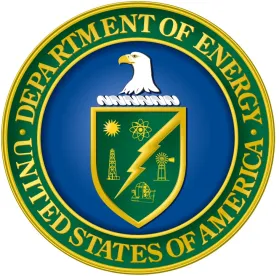In a notice published on August 31, 2020, the U.S. Department of Energy ("DOE" or the "Department") proposed revisions to its existing enforcement regulations for certain consumer products and commercial and industrial equipment.[1] The proposed revisions are intended to further align the regulations with the Energy Policy and Conservation Act of 1975 ("EPCA") and provide additional clarity and transparency about DOE's enforcement process. Manufacturers of covered products should review this proposal very carefully. While certain proposed changes may provide some reduction in administrative overhead, the practical outcome may be to increase a company's liability exposure during enforcement investigations as we discuss below.
Electric Motor Enforcement Procedures
Currently, the enforcement provisions for electric motors are promulgated separately at Part 431, Subpart U. According to DOE, the enforcement process for other covered products at Part 429 is much more developed. Thus, the Department believes that harmonizing electric motor enforcement with the procedures for all other covered products should afford electric motor manufacturers greater clarity. This is by no means an administrative change as the proposal could pose significant liability implications for electric motor manufacturers.
First, enforcement testing for motors could only be conducted by a laboratory that is accredited to the International Organization for Standardization ("ISO")/International Electrotechnical Commission ("IEC") standard 17025:2005(E), General requirements for the competence of testing and calibration laboratories. In contrast, Part 431 currently requires testing by National Institute of Standards and Technology/National Voluntary Laboratory Accreditation Program ("NIST/NVLAP") accredited laboratories.[2] The proposed change should not be significant as NVLAP incorporates the ISO/IEC 17025 standard.[3] As both NVLAP and ISO/IEC 17025 have moved to the most recent version of the standard ISO/IEC 17025:2017, however, it is not clear whether DOE's prescription of ISO/IEC 17025:2005 narrows the available pool of test laboratories.
More importantly, the proposal would reduce a company's ability to challenge DOE's enforcement testing by eliminating 10 C.F.R. § 431.383(f), which allows electric motor manufacturers to request additional DOE testing after DOE makes a noncompliance determination. Under the proposal, it appears that DOE would conduct additional sampling only at its discretion and if a unit in the initial sample is proven to have been defective.
Moving electric motor enforcement to Part 429 will also increase the number of possible causes of action available to DOE, including: failure to test a product in accordance with the applicable test requirements; use of controls or features to circumvent the test procedure and produce test results unrepresentative of the product's actual energy performance; and knowing misrepresentation by certifying an energy use or efficiency that is not supported by test data.[4]
Enforcement of Design Standards
DOE also is proposing to clarify that "design requirements" are energy conservation standards subject to DOE investigation and enforcement, as specified by the EPCA.[5] According to DOE, the evaluation of only a single test unit would be sufficient to demonstrate that basic models in the preceding categories are non-compliant:
DOE's proposal explicitly states that a test unit of a basic model subject to a design requirement may be selected for enforcement testing or examination. In such an instance, DOE will make a determination of noncompliance for the basic model based on an examination of whether a single unit of the basic model fails to comply with the applicable design requirements, as the standard applies to a design-not the measured performance of individual units-such that one unit can demonstrate noncompliance.[6]
Based on our cursory review, the following covered products are subject to design requirements:
Water boilers Torchieres
Conventional cooking tops Commercial unit heaters
Conventional ovens Walk-in coolers and walk-in freezers
Ceiling fans Residential boilers
Ceiling fan light kits
Manufacturers of these products would not only be subject to enforcement for noncompliance with the numerical energy performance, but also if a single unit fails to meet an applicable design standard. Examples of such failures could include failing to use a triple pane glass door with either heat-reflective treated glass or gas fill in a walk-in freezer as required by 10 C.F.R. § 431.306(b)(1).
Use of Third-Party or Competitor Data for Enforcement
Under its current enforcement regulations, DOE may request any relevant information from manufacturers to assist in determining whether their covered products comply with applicable energy conservation standards.[7] The Department is proposing to allow use of compliance information from other parties, including but not limited to, third-party certification programs or other manufacturers with independent test data, for enforcement purposes. According to the Department:
This proposal ensures that DOE can enforce its regulations in instances where relevant information is retained by parties other than the manufacturer. Parties other than the manufacturer often conduct independent testing to determine compliance with applicable standards. In such instances, DOE's ability to retrieve that test information could save government testing resources, and ensure that DOE can enforce in a timely manner, which will further DOE's goals of maintaining a level playing field for all parties and encouraging compliance.[8]
Contrary to DOE's stated intent, the current proposal may act to chill competitor complaints to the Department. In our experience, manufacturers will often submit test data to DOE to initiate an investigation of a potentially noncompliant competing product. This information is often provided on a confidential basis to avoid commercial disputes with a competitor, because the testing was done in-house rather than by an accredited laboratory, or for a variety of other reasons. The expectation is that DOE will pursue its own testing to support any subsequent enforcement action.
It is difficult to understand, however, how DOE could bring an enforcement action based on confidential information without triggering due process concerns. Thus, any final regulations must address DOE's procedures for "retrieving" data from third parties; how the Department intends to proceed if complainants request confidentiality; and the likelihood that it will investigate complaints in the absence of such data.
The DOE's proposal to retrieve test data from third-party certification programs may also raise concerns. Data submitted in support of certification is compliance data and should be available to the DOE. That said, manufacturers should review the terms of their certification program agreements to understand how these organizations will handle their certification data, whether notice will be provided before release to DOE or another agency, and the protections, if any, afforded to non-certification data.
D. Other Changes
The notice proposes several other clarifications and administrative revisions, including:
- Adding a process to petition for reexamination of a pending noncompliance determination.[9] As proposed, the process would require that DOE provide the manufacturer with a letter of intent at least 30 days prior to issuing a notice of noncompliance determination. The manufacturer would then have 30 days from the issuance of the letter to file a petition for reexamination that meets certain information requirements (e.g., sets out the material issue(s) with the Department's assessment or testing, provides complete test reports demonstrating compliance with the applicable standard, etc.). Upon review, DOE may modify or leave its pending determination unchanged.
- Providing more specificity and transparency when issuing test notices.[10] In addition to the basic model number, DOE proposes to include characteristics or specifications of subject model(s) (e.g., individual model numbers, serial numbers, manufacturer date ranges or locations) when issuing test notices. The revisions would also require manufacturers to inform the Department if the requested units are unavailable, along with details regarding the unavailability of the units and any similar available units. To that end, the Department proposes to add a provision reserving DOE's ability to make a noncompliance determination based on a reduced sample size in limited circumstances (e.g., when the basic model is subject to design requirements or test units are unavailable).[11]
- Allowing a finding of noncompliance based on a single assessment test where efficiency is at least 25% worse than the applicable standard.[12] According to DOE, the new process would avoid the expenditure of unnecessary resources by foregoing the typical enforcement testing process.
- Eliminating the requirement to notify customers of a determination of noncompliance.[13] To reduce the burden on manufacturers, the Department proposes to eliminate the provision at 10 C.F.R. § 429.114(a)(2), which requires that immediate written notice of a determination of noncompliance be provided to all persons to whom the manufacturer has distributed units of the basic model since the last compliance determination.
Comments on the proposal will be accepted until October 30, 2020. For any questions on this notice of proposed rulemaking or energy efficiency requirements in general, please contact us.
[1] Enforcement for Consumer Products and Commercial and Industrial Equipment, 85 Fed. Reg. 53,691 (Aug. 31, 2020).
[2] Or a laboratory accreditation body with a mutual recognition arrangement with NIST/NVLAP; 10 C.F.R. § 431.18.
[3]See generally NIST Handbook 150:2020, NVLAP Procedures and General Requirements, available from https://www.nist.gov/nvlap/publications-and-forms/nvlap-handbooks-and-lab-bulletins.
[4] 85 Fed. Reg. 53,694.
[5] See 42 U.S.C. § 6291(6).
[6] 85 Fed. Reg. 53,694.
[7]10 C.F.R. § 429.106(b). This includes covered products or equipment that are imported into the United States, which are also subject to the applicable provisions of 40 C.F.R. Part 429, 430, and 431. 10 C.F.R. § 429.5.
[8] 85 Fed. Reg. 53,694.
[9]Id. at 53,696.
[10] Id. at 53,694.
[11] See Id. at 53,705 (proposed as 10 C.F.R. § 429.111(a)(8)).
[12] Id. at 53,696.
[13] Id.





 />i
/>i

